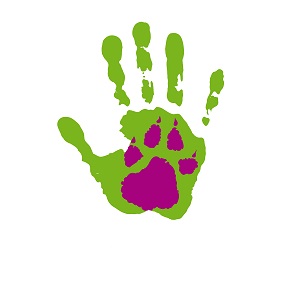Reactive Dogs – Can Professional Dog Trainers Help?
The term reactive dog is a recent term in the dog world. Older terms included nervous, fearful, aggressive, leash aggression, or dog aggressive. Reactive dogs were ‘washed out’ of training programs, and very often were rehomed, or worse. Trainers didn’t understand the problem, and were unable to create a solution.
Positive reinforcement trainers are making strong progress creating solutions for reactive problems, but there is still room for improvement. Some positive trends fail to address the true problem. This doesn’t mean they don’t work, or that they are not effective. Many of them can help owners control a specific problem, but they don’t teach the owner how to prevent future problems.
This leaves owners in a merry-go-round of problem solving and conditioning. The dog continues to react because the boundaries are not clear, and it lacks security.
Dog Aggression vs Reactive Issues
Positive reinforcement trainers believe there are no aggressive dogs. This is not true. Positive trainers associate aggression with a specific adversary. Dogs do not hate, or want revenge. They are conditioned to recognize a threat and deal with it.
The term reactive often refers to a dog who is uncomfortable in a situation and is ‘reacting’ in a negative way. This dog may act aggressive or fearful. It may bark or bite. But these are considered reactions to something that causes them stress or fear.
Ritualized Aggression Behaviour
Most of what I see when working with reactive dogs is ritualized aggression. Barking may have been was cute when a 10lb puppy growled and chased other dogs at the dog park. A puppy was allowed to run with big dogs. It learned fear through being bullied, chased, or knocked over. The puppy’s owner spent more time talking with new friends instead of engaging with their puppy. This left the puppy free to develop its own sense of right and wrong behavior.
Move forward 5 months and that puppy is now ‘dog reactive.’ It barks when a dog moves down the street. It reacts strongly when other dogs come near. It attacks other dogs when its space is ‘crowded’, or it tries to pull down any dog that runs.
Distracted Dogs or Reactive Dogs
Before labeling a dog as reactive it is important to determine whether the dog is truly reactive or distracted. A leash reactive dog pulls on the leash to get to something, or get away from something. But the ‘competing motivator’ or ‘stronger motivator’ is distracting the dog. As the dog continues to fight the leash it may eventually become reactive.
This pet owner may find the problem disappears by playing engagement games. Increase the positive reinforcement, and increase the level of engagement with the handler, and the distraction decreases. This is the premise behind the ‘look at me’ method of treating reactive dogs.
This how a positive trainer will prevent reactive problems. When puppies are taught to return to their owners when fearful, frustrated, or stressed, they are ‘self-correcting’ the problem. When this is strengthened by an owner who engages strongly, and reinforces a positive ‘fun’ feeling then they are creating a strong avoidance behavior.
Dominance Hierarchies in Dog Packs
Dogs have hierarchies whether positive trainers like it or not. Denying dogs the ability to play, and ‘sort it out’, creates insecurity and frustration. Stress and frustration can both turn into aggression.
Dog Behaviour Reinforcement
Every time our dog interacts with something or someone their behavior is being reinforced. Each time a dog is allowed to ‘act’ on an impulse its behavior is being reinforced.
Behavior Modification in Dogs
The premise behind retraining dogs is based in operant conditioning and counter conditioning.
The #1 reason why owners create reactive dogs, or fail to help their reactive dog, is lack of patience. It takes time to fix behavior problems.
Basic obedience is taught in a series of ‘tricks’ the dog learns. In the obedience class the dog walks the length of a hall. Practice is 10 minutes at a time several times a day. But what happens for the other 23.5 hours of the day? This is when behavior problems are reinforced. This is when you need to be watching your dog’s behavior and slowly, step by step, fixing the behavior through consistent repetition and patience.
